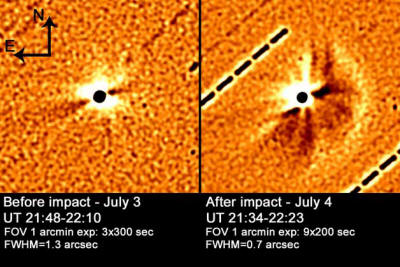|
Mar 03, 2006 from Thunderbolts Website
Score this one for electrical theorist
Wallace Thornhill. He was the only one to have anticipated a shift
in the arrangement, number, and the intensities of the jets of Comet
Tempel 1 after “Deep Impact” on July 4, 2005.
Both images were enhanced (Laplacian filter) to
highlight structures in the coma.
It appears that, in the eight months since Deep Impact (July 4, 2005), NASA officials have made no public comment on this finding.
It was certainly not expected. Why would a dirty snowball, snowy dirtball, or comet by any other name, in an electrically inert solar system, begin sporting new jets far removed from the source of Deep Impact?
The answer is that Tempel 1 is a charged body, and it was not moving through electrically neutral plasma.
Taking a pointer from Wallace Thornhill, we had written in our series of predictions posted the evening before Deep Impact:
For the full context of our
predictions on Deep Impact, we urge readers to review our
Picture of the Day for July 4, 2005.
|

